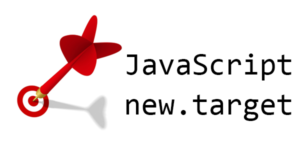Summary: in this tutorial, you learn about the JavaScript new.target metaproperty that detects whether a function or constructor was called using the new operator.
Introduction to JavaScript new.target

ES6 provides a metaproperty named new.target that allows you to detect whether a function or constructor was called using the new operator.
The new.target consists of the new keyword, a dot, and target property. The new.target is available in all functions.
However, in arrow functions, the new.target is the one that belongs to the surrounding function.
The new.target is very useful to inspect at runtime whether a function is being executed as a function or as a constructor. It is also handy to determine a specific derived class that was called by using the new operator from within a parent class.
JavaScript new.target in functions
Let’s see the following Person constructor function:
function Person(name) {
this.name = name;
}Code language: JavaScript (javascript)You can create a new object from the Person function by using the new operator as follows:
let john = new Person('John');
console.log(john.name); // johnCode language: JavaScript (javascript)Or you can call the Person as a function:
Person('Lily');Code language: JavaScript (javascript)Because the this is set to the global object i.e., the window object when you run JavaScript in the web browser, the name property is added to the window object as follows:
console.log(window.name); //LilyCode language: JavaScript (javascript)To help you detect whether a function was called using the new operator, you use the new.target metaproperty.
In a regular function call, the new.target returns undefined. If the function was called with the new operator, the new.target returns a reference to the function.
Suppose you don’t want the Person to be called as a function, you can use the new.target as follows:
function Person(name) {
if (!new.target) {
throw "must use new operator with Person";
}
this.name = name;
}Code language: JavaScript (javascript)Now, the only way to use Person is to instantiate an object from it by using the new operator. If you try to invoke it like a regular function, you will encounter an error.
JavaScript new.target in constructors
In a class constructor, the new.target refers to the constructor that was invoked directly by the new operator. It is true if the constructor is in the parent class and was delegated from the constructor of the child class:
class Person {
constructor(name) {
this.name = name;
console.log(new.target.name);
}
}
class Employee extends Person {
constructor(name, title) {
super(name);
this.title = title;
}
}
let john = new Person('John Doe'); // Person
let lily = new Employee('Lily Bush', 'Programmer'); // EmployeeCode language: JavaScript (javascript)In this example, new.target.name is the human-friendly name of the constructor reference of new.target
In this tutorial, you have learned how to use the JavaScript new.target metaproperty to detect whether a function or constructor was called using the new operator.